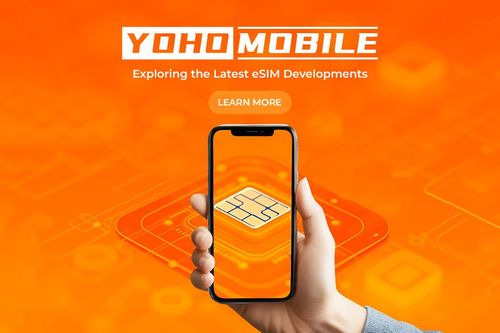Within the constantly evolving digital connectivity realm, the eSIM (embedded SIM) has risen as a game-changing technology, revolutionizing our global connections with the convenience of remote activation and the flexibility to switch carriers without relying on a physical SIM card. Thus, transforming the way we approach mobile and IoT (Internet of Things) devices. In this blog, we will delve into the latest eSIM developments, exploring the advancements and implications of this transformative technology.

The Rise of eSIM
eSIM technology first appeared on the scene in 2013, but it has gained significant traction in recent years. Users, device manufacturers, and mobile network operators have driven its widespread adoption by the convenience it offers.
-
Seamless Connectivity: eSIMs enable users to switch between carriers without the need to swap out physical SIM cards. This makes international travel much more convenient. For instance, users can switch to a local carrier without the hassle of finding and installing a new SIM card.
-
Smaller Devices: As mobile devices continue to shrink in size, traditional SIM card slots are becoming less practical. On the contrary, eSIMs are soldered directly onto the device’s motherboard, offering a more compact solution for modern, sleek designs.
-
IoT Revolution: The Internet of Things is experiencing explosive growth. As a result, eSIMs are playing a crucial role in enabling seamless connectivity for countless IoT devices. Whether smartwatches and health trackers to connected cars and industrial sensors.
-
Remote Provisioning: Users can remotely provision, activate, and manage eSIMs. Setting up our devices has never been easier. Likewise, network operators can now provide services without the need for physical interaction.
Latest eSIM Developments
-
5G Integration: As 5G networks roll out worldwide, eSIMs are evolving to support these high-speed, low-latency connections. This allows users to fully leverage the enhanced capabilities of 5G without the requirement to replace physical SIM cards.
-
Multi-Profile eSIMs: New eSIMs are being developed with support for multiple profiles. This means that a single eSIM can store information for several carriers or service providers, offering greater flexibility and choice to users.
-
Enhanced Security: Security is a top connectivity priority. The latest eSIMs include advanced security features like hardware-based encryption and secure boot mechanisms to safeguard user data and maintain the eSIM’s integrity.
-
eSIM in Smart Home Devices: eSIM technology is expanding its reach into the smart home industry. Manufacturers are now equipping devices like smart thermostats, security cameras, and doorbells with eSIMs to ensure seamless connectivity and remote management.

Implications and Future Trends
As eSIM technology continues to advance, it brings about several important implications and trends for the future of connectivity:
-
Global Roaming: eSIMs are simplifying global roaming, making it easier for travelers to stay connected without dealing with the hassles of purchasing and swapping physical SIM cards.
-
Market Growth: The eSIM market is poised for significant expansion. Mainly driven by the growing adoption of IoT devices, wearable technology, and the ongoing deployment of 5G networks.
-
Reduced e-waste: The elimination of physical SIM cards contributes to a reduction in e-waste, as there are no plastic cards to discard or replace.
-
Enhanced User Experience: E-SIM technology significantly improves the user experience by simplifying device setup and providing flexibility in choosing carriers and plans.
-
Increased Competition: eSIMs empower users to switch carriers more easily, which may lead to increased competition in the mobile network industry. Overall it benefits consumers with better service offerings and pricing.
Conclusion
The latest eSIM developments are propelling us into a future where connectivity is more convenient, secure, and versatile than ever before. From global roaming to IoT expansion, eSIM technology is at the forefront of the digital connectivity revolution. As this technology continues to evolve, we can expect to experience even more exciting developments. eSIMs, whether in our smartphones, smartwatches, or the multitude of IoT devices around us, will play a pivotal role in our connected future.
